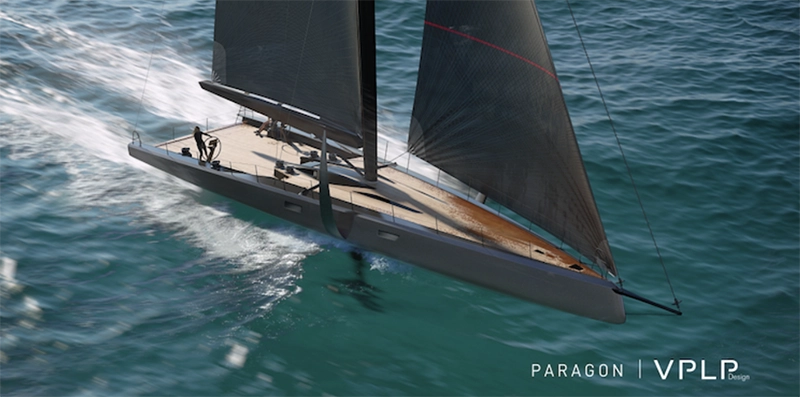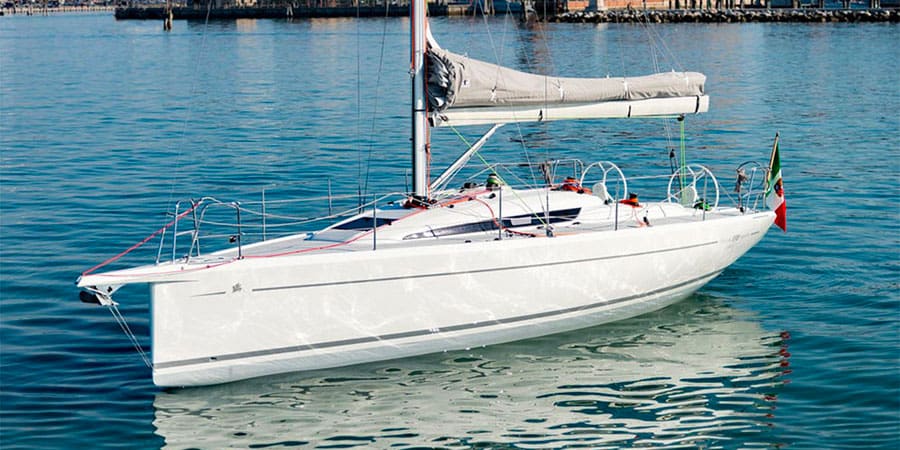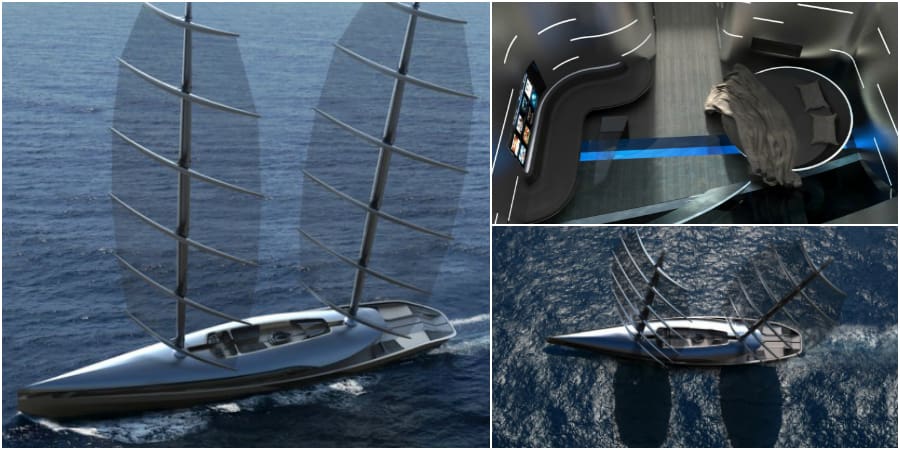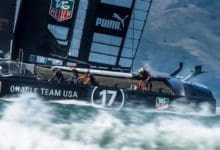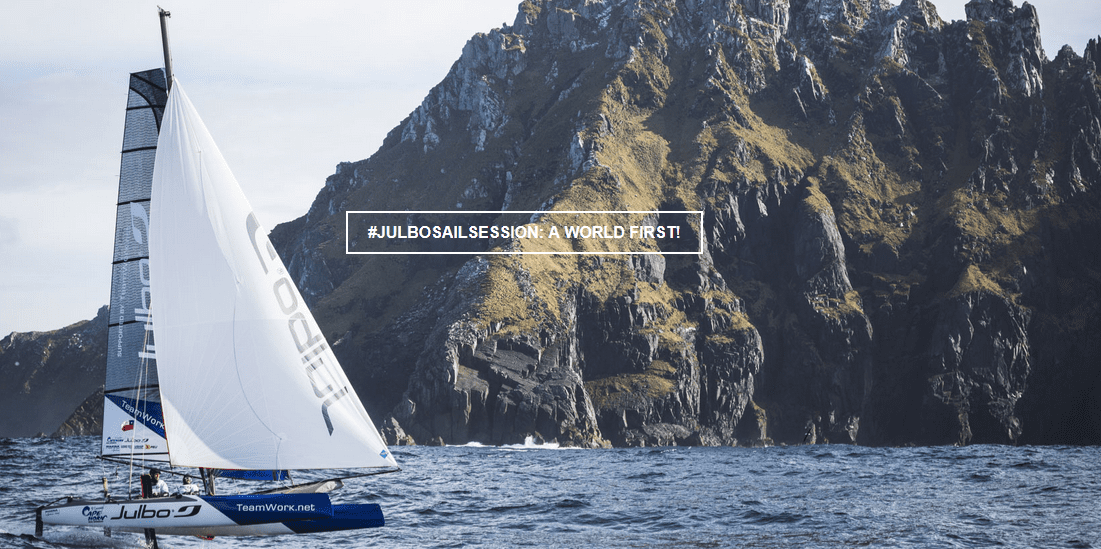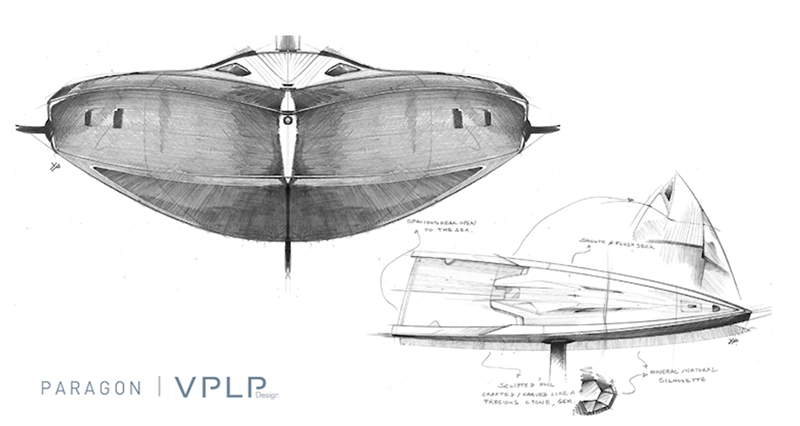Paragon, the VPLP Design’s Inspired by Maxi Sailing Boats and Foilers
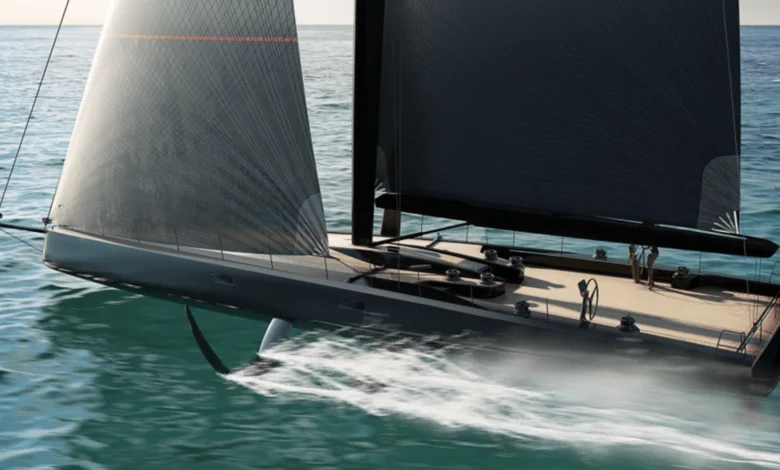
Paragon illustrates VPLP Design’s quest for excellence. This fast 85’ (26 m) monohull was conceived like a flawless diamond, shaped for its visual perfection and technical performance. This project opens the door to a new era of vessels inspired by maxi sailing boats and foilers, both inshore and offshore.
On this project, the team took inspiration from the art of jewelry-making to create a mineral-like minimalist concept. “Paragon” is also the name of a flawless diamond mined in Brazil. The deck and superstructures were meticulously refined to remove the superfluous, allowing them to focus on visual perfection and the sailing experience. The coachroof doesn’t rise out of the deck, instead, they merge to produce a faceted and perfectly integrated object. The team’s fastidious work emphasizes the vast teak deck not only as a space for relaxing but also as the theatre of sailing operations.
And the deck also benefits from the presence of the foils. As the boat accelerates, the thrust created by the foil lifts the boat upright, completely changing the relationship between the crew and the extremely beamy deck which is typical of these racing yachts.
From a technical point of view, Paragon is fitted with a canting keel and foils. Very easy to handle underway, this monohull is designed for racing round three buoys and participating in major IRC events (Middle Sea Race, Caribbean 600, etc.). She leverages her foils to make herself lighter and faster, judiciously exploiting the skimming effect rather than achieving true hydro foiling. Digital simulations were undertaken by VPLP Design, and routings on courses similar to the Middle Sea Race and the Giraglia all point to the conclusion that an 85’ foiler can beat a 100 footer of conventional design.
Reductions in weight and stresses across the board suggest that it will be possible to sail with crews half the size of those required on the maxis currently in circulation. Especially since the foils are much easier to handle than on an IMOCA. They can be set as soon as the boat hits 10 knots of true wind. When the vessel is alongside, they are brought in and don’t increase the ship’s beam.
Not only does Paragon’s architecture disrupt the well-established trends of the yachting world, her design does too. It’s a consideration that appears early on in the general process. At VPLP, each project begins with brainstorming on the concept in order to find the vessel’s the soul and personality. The creative process involves the team immersing themselves in the context surrounding the project long before putting pencil to paper on the drawing board. Beyond the question of aesthetics, the purpose of design is to resolve problems and make an object such as Paragon unique, flawless and efficient, while satisfying the customer’s expectations.
Refined and fast, this Formula 1 of the seas is an excellent illustration of VPLP Design’s scope and creativity, an approach made possible through the continuity existing between the engineering, architecture, design and modelling departments.

